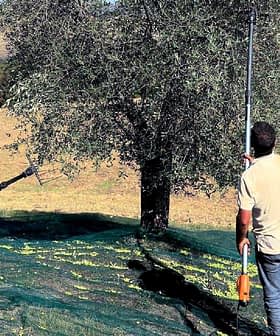A team of researchers in Sweden gained new insights into the molecular mechanisms associated with plant reactions to environmental stressors, such as touching, pruning or infection.
The scientists explored the inner working of such reactions and the resulting behavior of the plant, discovering new crucial genetic factors which could impact crop yields.
We have identified a completely new signaling pathway that controls a plant’s response to physical contact and touch. Now the search for more paths continues.
The Lund University team reiterated that plants react to mechanical stimuli to better cope with specific environmental threats.
The study published in Science Advances explained that “mechanical stimulation triggers rapid gene expression changes and affects plant appearance (thigmomorphogenesis) and flowering.”
See Also:NASA Climate Scientist Wins World Food PrizeThigmomorphogenesis is generated by repeated stimulation and includes significant modifications in the plant morphology, such as dwarfism, pithiness, altered mechanical properties of the stem, delayed flowering, improved anchorage strength of roots and reduced stomatal aperture.
Such changes tend to improve the ability of the plants to resist strong winds and improve their response to infection. In addition, these changes might strengthen resilience to cold, salinity, or drought.
The new research and a few other studies exploring similar plant reactions contribute to a growing knowledge of mechanisms that scientists believe could be crucial to improving farming techniques.
“Mechanostimulation has been gaining attention as a potential method for sustainable agriculture practices to improve food security,” the researchers wrote.
“However, the plant response to mechanical stimulation is very complex, as it depends on the intensity of mechanical load and frequency of exposures,” they added. “Understanding the molecular mechanism of plant mechanoperception and thigmomorphogenesis is imperative to apply this method for large-scale farming.”
Previous research identified molecular mechanisms related to plant mechanoperception. Other studies noted the important relationship between jasmonic acid and touch signaling.
“Despite many years of research on how transcriptional responses to mechanical stimulation in plants are controlled, only a few regulators have been identified and consistently validated,” the researchers wrote.
“Here, we used reverse genetics to further characterize the molecular mechanisms underlying touch signaling,” they added.
For example, Olivier Van Aken, a biologist at Lund University, told ScienceAlert magazine: “We exposed the plant thale cress to soft brushing, after which thousands of genes were activated, and stress hormones were released. We then used genetic screening to find the genes that were responsible for this process.”
According to his colleague Essam Darwish, the study results “solve a scientific mystery that has eluded the world’s molecular biologists for 30 years.”
“We have identified a completely new signaling pathway that controls a plant’s response to physical contact and touch,” he added. “Now the search for more paths continues.”
The researchers believe that a better understanding of those mechanisms might bring new opportunities for global agriculture, with climate change and conflicts threatening food security in many regions.
“Given the extreme weather conditions and pathogen infections that climate change leads to, it is of utmost importance to find new ecologically responsible ways to improve crop productivity and resistance,” Van Aken concluded.








